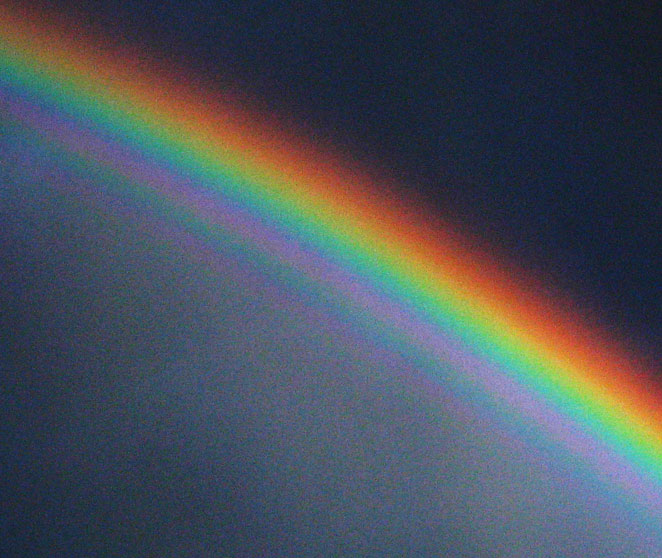
Tuesday, June 30, 2009
Thursday, June 25, 2009
Prac Assessment
In groups you are to plan, experiment and report a prac that covers the following "Students Do" points

Write an Aim, Propose a circuit with a two resistors, various voltmeters and ammeters.
Build and test the circuit, demonstrating these points.
Leave a space in your prac books to paste these points in.
Revision links
Basic circuits
Voltage
Series and Parrallel

Write an Aim, Propose a circuit with a two resistors, various voltmeters and ammeters.
Build and test the circuit, demonstrating these points.
Leave a space in your prac books to paste these points in.
Revision links
Basic circuits
Voltage
Series and Parrallel
Tuesday, June 23, 2009
Wednesday, June 17, 2009
Saturday, June 13, 2009
More on rainbows

It may come as a shock the purple hue at the bottom of the rain bow, is not the bluest light that has been bent at the largest amount, but a superposition of a "Supernumerary" rainbow. The darker blue at the short wavelenght is being mixed with the red of the next rain bow. I have not been able to model this effect. The supernumeray rainbows are seen when the rain drop size are close to Mie white cloud scattering.

Here is another picture which to the untrained eye looks as if the last colour of the rainbow is purple, but you can see it is very light green.
If you put sunlight through a prism you get the pictures below


Dr Hill Discusses Rainbows

Rainbows occur when sunlight is refracted as it enters, totally internally reflects and finally leaves water drops suspended in clouds.
The water drops have to larger than normal cloud droplets. Light from the background comes straight to you with out being scattered as it would be for fog or a cloud.
There are different colours because the red light travels faster through water, is refracted less and is at the top of the rainbow. Blue slows more and is bent further.
Because rainbows are reflected light you can enhance them with polaroid sunnies or completely turn them off by turning your sunnies through 90 degrees.
As you can see in the first photo there is a second more dispursed rainbow as the light takes a trip throught the rainbow.
You can also see repeated rainbows ans general cloudiness beneath the rainbow.
Friday, June 12, 2009
Saturday, June 6, 2009
Homework Register
14. Start of Term 3 - Holiday Homework
13. 8/7/09 Chapter 6 Questions 26 - 32. to be worked through in class - email questions you want worked through
12. 6/7/09 Page 117 questions 4 to 16 in Jacaranda Preliminary Course Physics
11. 2/7/09 Getting Electricity into the Home
10. 29/6/9 Prac assignment - Prelim work
9. 25/6/9 Complete writting the Galvani and Volta Debate - Dates- What they thought, what was the real answer. What does this say about the history of science.
8. 25/6/9 Complete Topic Test on The World Communicates
- Page 26 Q 14 , 15 Superposition of waves
- Write the speeds of sound for in air, water and vacuum, the speed of light
- What is the wavelength of 330 Hz sound
- Summarize the properties of IR, Vis, UV, Xrays, Gamma Link
- Question 13 Page 42
- Summarize Chapter 4 (8/6/09)
- Work Sheet on Motion (9/6/09)
Wednesday, June 3, 2009
Subscribe to:
Posts (Atom)
Calander
Translator
About Me

- drhill
- I come from a Science family: My father Geoffrey Hill was Australia's first computer programmer on CSIRAC the fourth computer in the world. He is credited with invention of Computer music and the development of “Interprogram” a language before Basic. My PhD is in Atomic and Molecular Physics. I have researched the activated oxygen layer above the ozone layer, and 'Assigned' the world's smallest molecule. At the University of Toronto I researched high power UV lasers. I have specialized in automation in fibre optics. This developed into research in Machine Intellect and Robots. I have enjoyed work as an Explainer with Questacon and my time as a part-time soldier. I currently teach High School Science at Epping Boys’ High.









